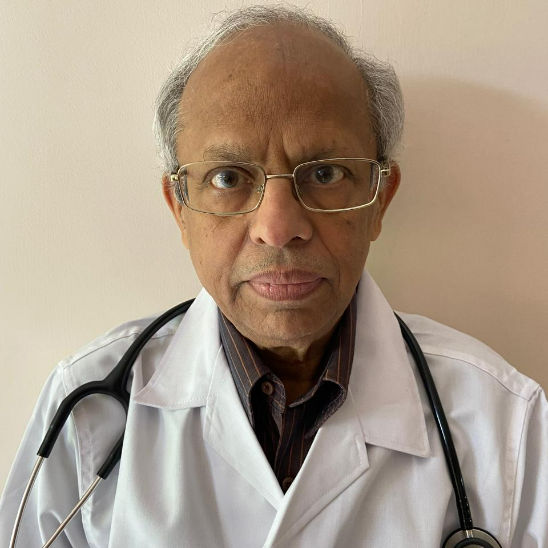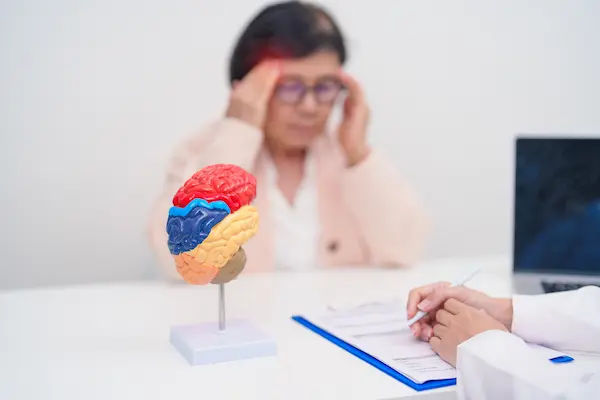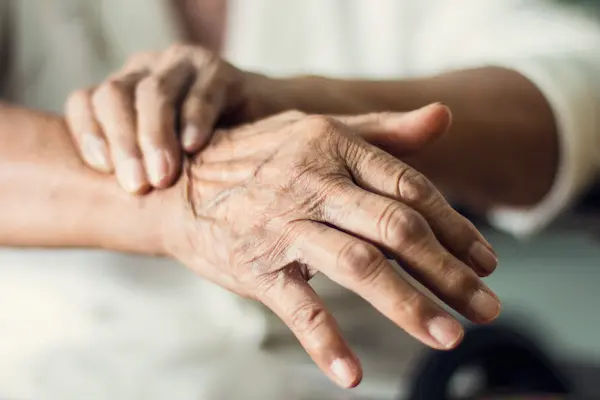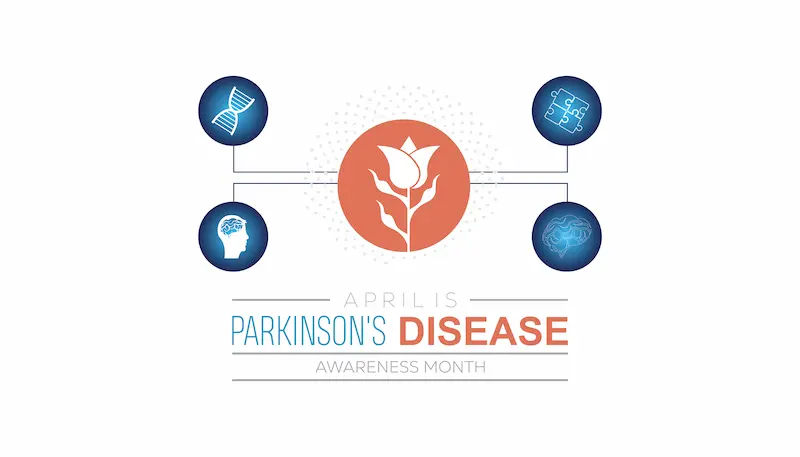Parkinson's Treatment: Medical vs. Surgical Options
Explore the treatment options for Parkinson’s disease, including medical therapies and surgical interventions, to manage symptoms effectively.


Introduction
Receiving a Parkinson's Disease diagnosis can feel overwhelming, but understanding your treatment options is the first step toward taking control. Parkinson's is a progressive neurological disorder, and while there is currently no cure, highly effective strategies exist to manage symptoms and maintain a high quality of life for years. The journey typically revolves around two main pathways: medical management and surgical management. This guide is designed to demystify these options. We will break down the most common Parkinson's disease medications, explore advanced procedures like Deep Brain Stimulation (DBS), and explain how they can work together. Our goal is to empower you and your loved ones with the knowledge to have informed conversations with your healthcare team about creating a personalised treatment plan that's right for you. Think of this not as a choice between two distinct paths, but as a roadmap where different tools are used at different stages of the journey.
Understanding Parkinson's Disease: The Core Challenge
To understand the treatments, it helps to know what's happening in the brain. Parkinson's primarily affects neurons in a region called the substantia nigra. These cells are responsible for producing dopamine, a crucial chemical messenger that enables smooth, coordinated muscle movement.
The Role of Dopamine
Dopamine acts like a conductor in an orchestra, ensuring all parts of the brain involved in movement work in harmony. As Parkinson's progresses, these dopamine-producing cells are lost. With less dopamine, the brain's ability to control movement deteriorates, leading to the primary motor symptoms of Parkinson's: tremors, stiffness (rigidity), slowness of movement (bradykinesia), and postural instability.
The Progression of Symptoms
Symptoms often start gradually, perhaps a slight tremor in one hand or a feeling of stiffness. Over time, they may become more pronounced and begin to affect both sides of the body. It's important to note that Parkinson's also includes non-motor symptoms like sleep problems, loss of smell, and cognitive changes, which also require management.
Consult a Neurologist for the best advice
The First Line of Defence: Medical Management of Parkinson's
Medication is the cornerstone of initial treatment for Parkinson's disease. The primary goal is to replenish dopamine levels in the brain or mimic its effects.
Levodopa: The Gold Standard Medication
The most effective and common medication is Levodopa. It's a chemical building block that the brain converts into dopamine. It's almost always combined with another drug, Carbidopa (e.g., in Sinemet), which prevents Levodopa from being broken down in the bloodstream before it reaches the brain, reducing side effects like nausea. Levodopa is highly effective at controlling motor symptoms, particularly slowness and stiffness.
Dopamine Agonists and Other Supporting Medications
Dopamine agonists (e.g., Pramipexole, Ropinirole) are another class of drugs that mimic dopamine's effects in the brain. They are often prescribed earlier in the disease or alongside Levodopa. Other medications include MAO-B inhibitors (e.g., Selegiline, Rasagiline), which slow the breakdown of natural dopamine and Levodopa in the brain, and COMT inhibitors (e.g., Entacapone), which prolong the effect of Levodopa.
Managing Medication Side Effects and "On-Off" Fluctuations
As Parkinson's advances, long-term use of Levodopa can lead to challenges. Many people experience "on-off" fluctuations, where the medication's effect wears off before the next dose is due (an "off" period), causing symptoms to return abruptly. Dyskinesias, involuntary, fidgety movements, can also occur during "on" periods. Managing these fluctuations is a key part of advanced medical management, often involving adjusting dosage timings or adding other medications. If you experience significant side effects or "on-off" fluctuations, it’s crucial to consult a neurologist. You can book an appointment with a specialist through Apollo24|7 to discuss adjusting your treatment plan.
When Medications Aren't Enough: Exploring Surgical Options
When medications become less effective or cause disabling side effects, surgery may be considered. The primary surgical treatment is Deep Brain Stimulation (DBS).
What is Deep Brain Stimulation (DBS)?
DBS is often described as a "brain pacemaker." It involves surgically implanting thin electrodes into specific areas of the brain that control movement. These electrodes are connected by wires under the skin to a battery-powered neurostimulator implanted in the chest. The device delivers continuous electrical pulses that help block the abnormal nerve signals causing Parkinson's symptoms.
Is DBS Surgery Right for You? The Candidacy Criteria
DBS is not for everyone. Ideal candidates generally:
• Have a clear diagnosis of Parkinson's for at least 4-5 years.
• Respond well to Levodopa but have significant "off" periods or troublesome dyskinesias.
• Do not have significant memory problems, dementia, or untreated depression.
• Are in good overall health for surgery.
A thorough evaluation by a multidisciplinary team, including a neurologist and a neurosurgeon, is essential to determine if deep brain stimulation success rates are likely to be high for an individual.
The DBS Procedure: What to Expect
The procedure is complex and happens in stages. Often, the patient is awake during part of the electrode placement to ensure optimal targeting. After surgery, the device is programmed externally to find the right settings for symptom control, a process that can take several months. It's important to understand that DBS is not a cure; it helps manage symptoms, but the disease continues to progress. Most patients still need medication, though often at reduced doses.
Medical vs. Surgical: A Side-by-Side Comparison
When deciding on treatment, it helps to understand the differences. Here's a side-by-side comparison of medical and surgical options.
Key Differences at a Glance
Here are the key differences at a glance.
Weighing the Risks and Benefits
The benefits of DBS can be profound: a significant reduction in tremors, rigidity, and "off" periods, leading to more hours of good symptom control each day. However, the risks of brain surgery are real and must be carefully considered. The decision is highly personal and depends on an individual's symptoms, overall health, and personal goals. Discussing the potential benefits and risks of surgery for Parkinson's with a movement disorder specialist is a critical step.
The Integrated Approach: Combining Medicine and Surgery
The choice between medical and surgical management is rarely absolute. For most people who undergo DBS, the result is a synergistic effect. The surgery helps smooth out the fluctuations, allowing for lower and more consistent doses of medication. This integrated approach often provides the best overall control of symptoms, maximising good quality "on" time while minimising dyskinesias and other side effects.
Beyond Medication and Surgery: The Role of Lifestyle and Therapy
A comprehensive Parkinson's treatment plan extends beyond pills and procedures. A healthy lifestyle is vital.
• Physical Therapy: Improves balance, flexibility, and gait.
• Occupational Therapy: Helps adapt daily activities to maintain independence.
• Speech Therapy: Addresses speech and swallowing difficulties.
• Exercise: Regular, vigorous exercise (e.g., biking, tai chi, boxing classes designed for PD) is shown to have a neuroprotective effect and can significantly improve mobility and mood.
Conclusion: Partnering for Your Best Quality of Life
The journey with Parkinson's Disease is unique for every individual. The decision between medical and surgical management is not a one-time choice but an evolving conversation with your healthcare team. By understanding the roles, benefits, and limitations of medications and procedures like DBS, you become an active participant in your care. The ultimate goal of all Parkinson's disease treatment is to preserve your quality of life, independence, and well-being for as long as possible. Stay informed, ask questions, and lean on the support of specialists, therapists, and your loved ones. If you are experiencing new or worsening symptoms, don't hesitate to seek professional guidance. You can consult a neurologist online with Apollo24|7 to discuss your concerns and review your current management plan.
Consult a Neurologist for the best advice
Consult a Neurologist for the best advice

Dr. Aditendraditya Singh Bhati
Neurosurgeon
18 Years • MBBS(2004), DNB Neurosurgery(2014); MNAMS; Fellow Neuroendoscopy
Delhi
Apollo Hospitals Indraprastha, Delhi
(100+ Patients)

Dr. Ganeshgouda Majigoudra
Neurologist
10 Years • MBBS, MD ( GENERAL MEDICINE) DM (NEUROLOGY)
Bengaluru
Apollo Clinic, JP nagar, Bengaluru

Dr Rajashekar Mummadi
Neurologist
3 Years • MBBS, DNB General Medicine, DRNB Neurology
Hyderabad
Dr Ram's Neuro Clinic, Hyderabad

Dr. E Prabhakar Sastry
General Physician/ Internal Medicine Specialist
40 Years • MD(Internal Medicine)
Manikonda Jagir
Apollo Clinic, Manikonda, Manikonda Jagir
(150+ Patients)

Dr S Selvin
Neurologist
10 Years • MBBS, MD, DM (Neurology), FINR fellowhsip in Interventional Neuro Radiology
Chennai
Apollo Speciality Hospitals Vanagaram, Chennai
Consult a Neurologist for the best advice

Dr. Aditendraditya Singh Bhati
Neurosurgeon
18 Years • MBBS(2004), DNB Neurosurgery(2014); MNAMS; Fellow Neuroendoscopy
Delhi
Apollo Hospitals Indraprastha, Delhi
(100+ Patients)

Dr. Ganeshgouda Majigoudra
Neurologist
10 Years • MBBS, MD ( GENERAL MEDICINE) DM (NEUROLOGY)
Bengaluru
Apollo Clinic, JP nagar, Bengaluru

Dr Rajashekar Mummadi
Neurologist
3 Years • MBBS, DNB General Medicine, DRNB Neurology
Hyderabad
Dr Ram's Neuro Clinic, Hyderabad

Dr. E Prabhakar Sastry
General Physician/ Internal Medicine Specialist
40 Years • MD(Internal Medicine)
Manikonda Jagir
Apollo Clinic, Manikonda, Manikonda Jagir
(150+ Patients)

Dr S Selvin
Neurologist
10 Years • MBBS, MD, DM (Neurology), FINR fellowhsip in Interventional Neuro Radiology
Chennai
Apollo Speciality Hospitals Vanagaram, Chennai
More articles from Parkinsons Disease
Frequently Asked Questions
1. At what stage of Parkinson's is surgery recommended?
DBS is typically recommended for people in the mid to advanced stages of Parkinson's (usually 4+ years after diagnosis) who still respond well to Levodopa but experience significant motor fluctuations or dyskinesias that are not well-controlled by medication adjustments alone.
2. Does DBS surgery cure Parkinson's Disease?
No, DBS is not a cure. It is a treatment that helps manage the motor symptoms of Parkinson's. The underlying disease continues to progress, but DBS can provide significant and sustained symptom relief for many years, improving daily functioning and quality of life.
3. What are the alternatives to Deep Brain Stimulation?
The main alternative is continued optimisation of medication. Other options being studied include focused ultrasound (a less invasive procedure for tremor) and infusion therapies like Duodopa (a gel form of Levodopa delivered directly into the small intestine). The best alternative depends on your specific symptoms and medical history.
4. Can Parkinson's medications make symptoms worse over time?
The medications themselves don't make the disease worse. However, as the disease progresses, the brain's ability to store and use dopamine becomes more impaired. This leads to the common long-term complications of treatment, such as 'on-off' fluctuations and dyskinesias, which are a result of the disease's progression and the body's changing response to the medication.
5. How long does it take to recover from DBS surgery?
The initial healing from the incisions takes a few weeks. However, the full benefit is realised over several months as the device is programmed and fine-tuned. The first programming session usually occurs a few weeks after surgery, with follow-up sessions to optimise settings.




